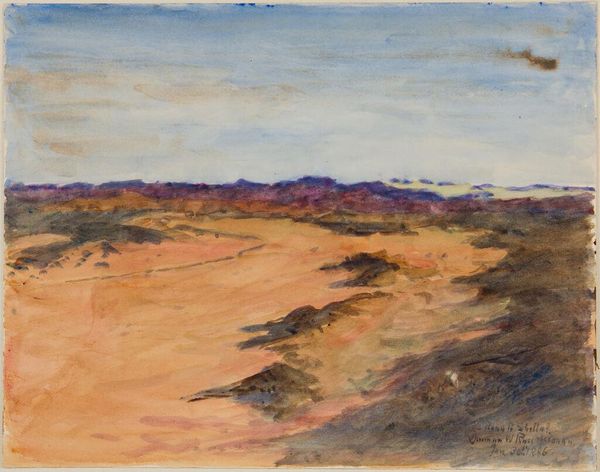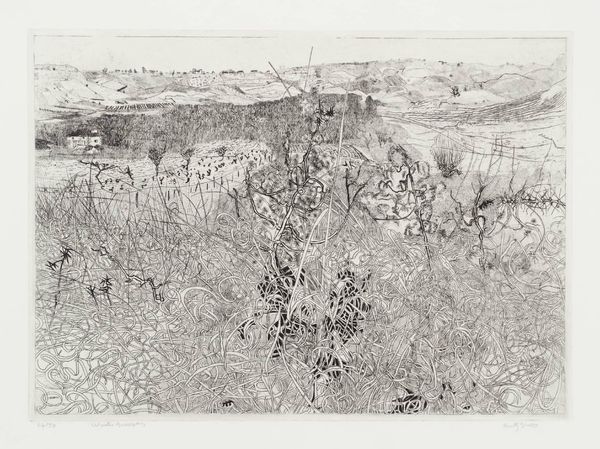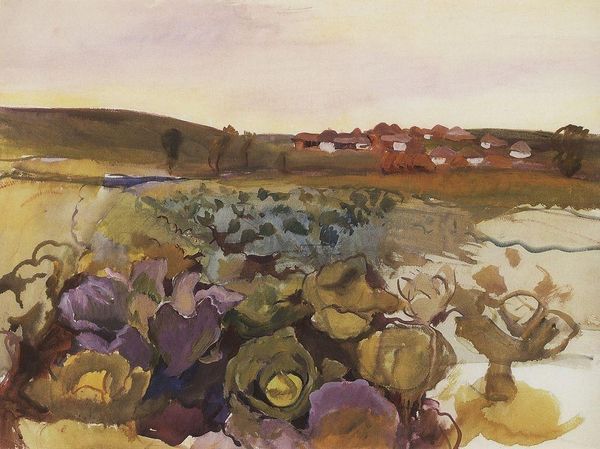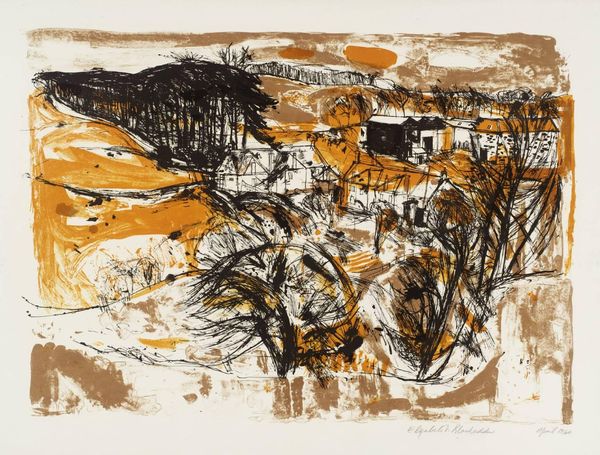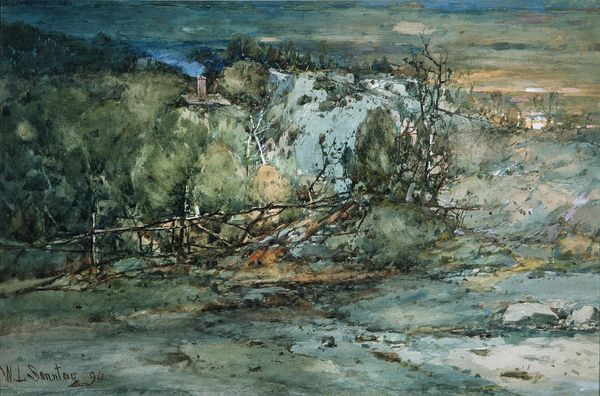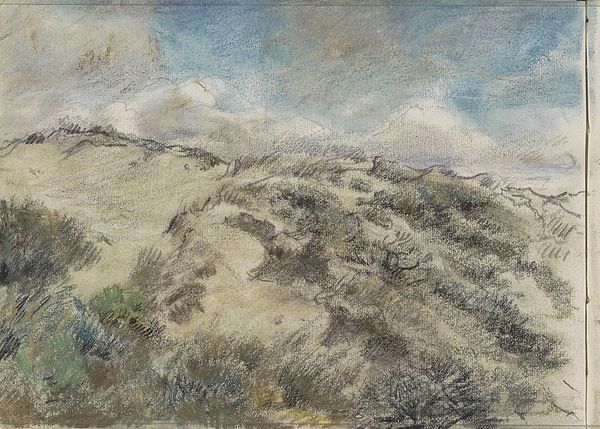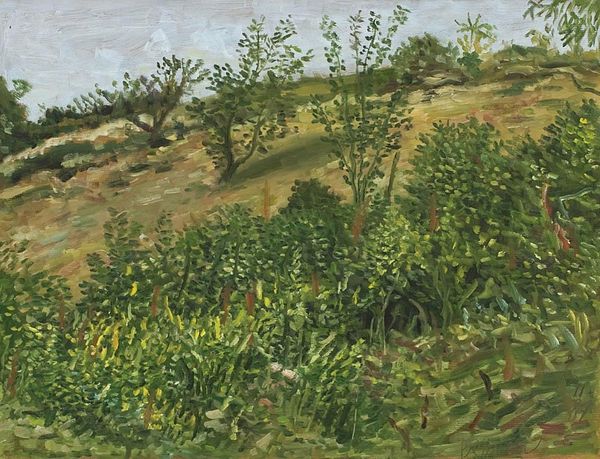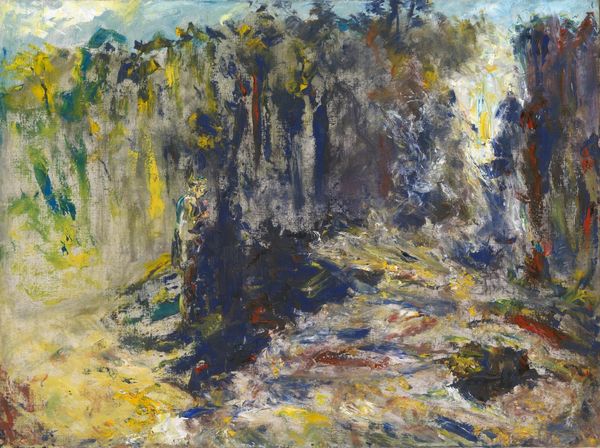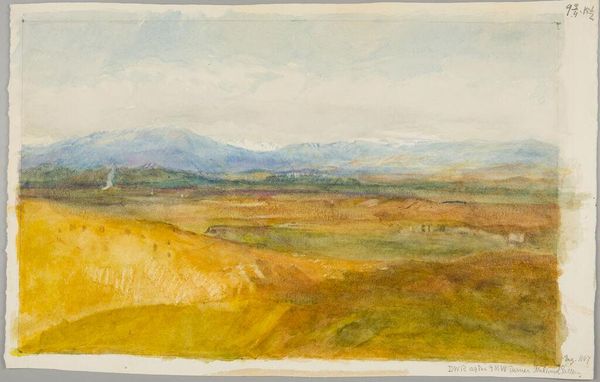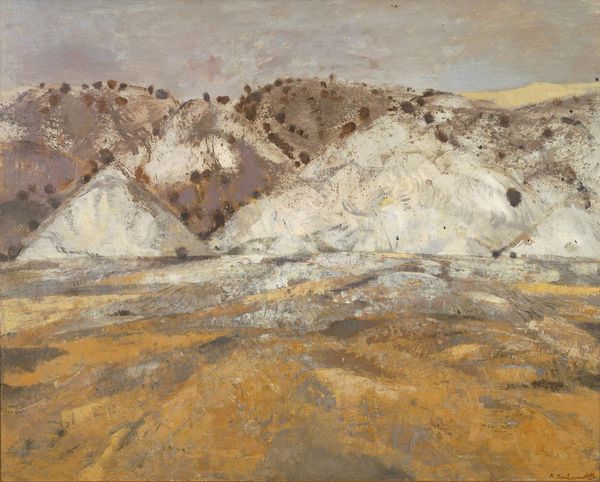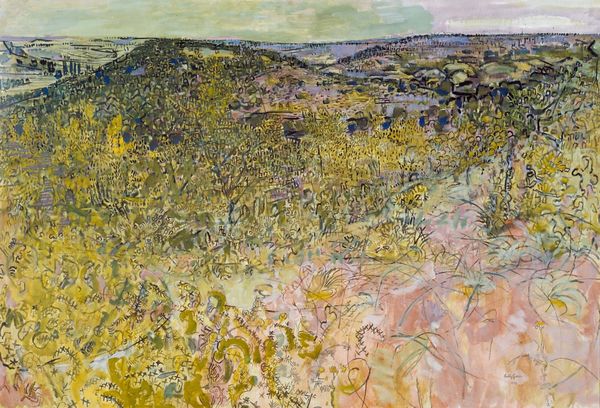
plein-air, oil-paint, impasto
#
plein-air
#
oil-paint
#
landscape
#
charcoal drawing
#
oil painting
#
impasto
#
modernism
Copyright: Avigdor Arikha,Fair Use
Curator: Avigdor Arikha's 1980 oil painting, "Jerusalem Seen from the South," currently residing here at Tate Modern, offers a strikingly understated depiction of a historically charged landscape. Editor: The overall tone feels bleached, almost sun-baked. The muted palette creates a sense of distance, as if viewed through layers of heat haze. There’s something subtly melancholic about it. Curator: Consider how the artist uses impasto to build up texture. Note how the brushstrokes aren't merely representational, but rather call attention to the materiality of the paint itself. This focus disrupts any straightforward mimetic reading. Editor: I wonder how this specific perspective chosen by Arikha – seen from the south – impacts the interpretation. Is he intentionally highlighting the historical complexities viewed from that particular angle, engaging with issues of occupation and displacement tied to Jerusalem's identity? The golden dome barely peeks above the hill; one could miss its relevance entirely! Curator: Perhaps. Or maybe Arikha is reducing the religious significance of these sites. The painting prioritizes the formal aspects, its composition and execution, above any explicit narrative. Observe the contrast between the loosely defined foreground and the more focused horizon. It guides the eye without resorting to sentimentalized views. Editor: Yet, I can’t detach the landscape from its profound geopolitical meaning. His deconstruction of form, his refusal of easy symbolism, paradoxically amplifies the tensions inherent to representing such a loaded site. The pale tones make me think of faded documents, as if recalling obscured histories. Curator: Do you think that viewing it with such emphasis on contemporary relevance flattens its meaning? What of simply appreciating its spatial qualities, or the modulation of light and color across its surface? Editor: I see value in both. But acknowledging the power dynamics inherent in the land makes the encounter far more potent for our current times. I notice it encourages questioning and situates it within a bigger narrative than it is just a painting. Curator: It is intriguing how different viewpoints illuminate diverse qualities of a piece. I may have underestimated the extent to which a sociopolitical lens enriches, not flattens, engagement with such a picture. Editor: Indeed, viewing artworks through multiple frames enhances its significance in many varied ways, enriching and layering meaning through diverse perspectives.
Comments
No comments
Be the first to comment and join the conversation on the ultimate creative platform.
